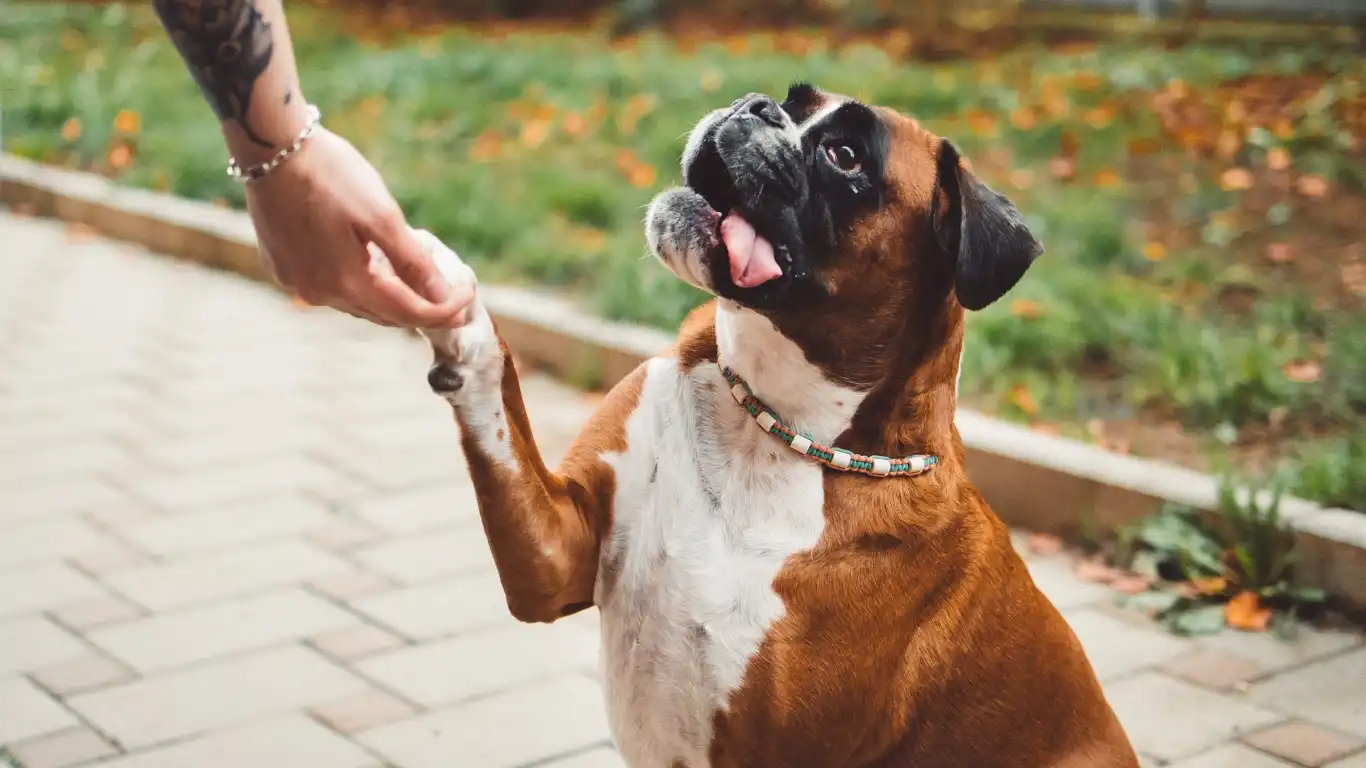How to Give a Dog a Pill Without Stress: Easy Tips That Work
Giving your dog a pill can sometimes feel like trying to perform a magic trick — except the dog isn’t quite as willing to cooperate as your audience. If you’ve ever wrestled with a wriggling pup or ended up dropping that tiny pill behind the couch, you know the struggle is real. From my years working as a Veterinary Technician specializing in nutrition, I’ve seen firsthand how stressful this simple task can be for both pets and their humans. But the good news is, there are tried-and-true ways to make this experience smoother and less stressful for everyone involved. In this post, we’ll explore how to give a dog a pill without stress, sharing practical tips and tricks that actually work — because when it comes to your furry friend’s health, stress shouldn’t be part of the package.
Why Giving a Pill Can Be Stressful for Dogs (and Owners!)

First off, it helps to understand why your dog might be less than thrilled about taking pills. Dogs are creatures of habit, and anything new or unpleasant can throw them off balance. Pills often taste bitter or have strange textures, and dogs have a powerful sense of smell that can detect even the slightest scent of something unfamiliar. Plus, the act of forcing a pill into their mouth might feel threatening to some dogs, triggering anxiety or defensive behavior.
From my experience, dogs with a history of negative vet visits or previous rough pill-giving attempts can associate pills with stress or discomfort. This creates a cycle that’s tough to break without a patient, gentle approach. As a vet tech, I’ve learned that how you give the pill can make a massive difference — not just for your dog’s comfort but for their willingness to cooperate next time.
How to Give a Dog a Pill Without Stress: Preparation Is Key

1. Get Your Supplies Ready
Before you even attempt to give the pill, make sure everything you need is within reach. This can include:
- The pill itself (or pills, if multiple doses)
- A favorite treat or some soft food
- A small amount of water or a syringe (without the needle!) for hydration
- A calm, quiet space where your dog feels safe
Having everything prepped beforehand means you won’t have to scramble mid-process, which can make your dog nervous.
2. Stay Calm and Positive
Dogs pick up on our energy — if you’re stressed or frustrated, they’re more likely to react in kind. I always remind pet parents to take deep breaths and talk in a soothing voice. If your dog sees you relaxed, it helps them relax too. Sometimes, a little patience and a few encouraging words are just what’s needed to turn the experience around.
3. Choose the Right Technique for Your Dog’s Personality
Not all dogs respond the same way to pill-giving methods. Some are food motivated, others might be a bit more stubborn or fearful. From personal experience, tailoring your approach makes a huge difference:
- Food disguising: Hiding the pill in tasty treats or soft food can be a lifesaver for food-loving dogs.
- Manual administration: For some dogs, gently opening their mouth and placing the pill at the back of the tongue followed by a quick reward is effective.
- Pill pockets or special treats: These commercial products are designed to mask the pill’s taste and make swallowing easier.
Experimenting with these methods can help you find the one that works best for your furry friend. I’ve seen dogs that usually reject pills happily accept them when wrapped in peanut butter or cheese, so don’t hesitate to get creative (while keeping your dog’s diet and allergies in mind).
Advanced Tips for How to Give a Dog a Pill Without Stress

4. Mastering the Manual Method: Hands-On but Gentle
Sometimes, despite all the creative food disguises, you need to give the pill directly. This can be intimidating, but trust me, it doesn’t have to be a wrestling match. From my years as a veterinary technician, I’ve seen countless owners who were nervous at first, but with a little practice, they got it down smooth and easy.
Here’s a step-by-step that I always recommend:
- Stay relaxed: Your calm demeanor is contagious.
- Secure your dog gently: For smaller dogs, sitting them on your lap works well; for bigger ones, you might want a helper.
- Hold the muzzle: Place your thumb and forefinger on the sides of the dog’s mouth, just behind the canine teeth, to gently open the jaw.
- Place the pill: Use your other hand to place the pill as far back on the tongue as possible — this encourages swallowing.
- Close the mouth: Immediately close their mouth and gently stroke their throat or blow on their nose to trigger swallowing.
- Reward right away: Offer praise, pets, or a treat to make the experience positive.
I can’t stress enough the importance of being gentle and confident here. If you rush or get rough, your dog will resist next time. Patience truly pays off.
5. When Treats Aren’t Enough: Using Pill Pockets and Special Tools
Over the years, I’ve noticed that pill pockets can be a total game changer, especially for picky dogs. These soft, dough-like treats have a built-in space for hiding pills, making the whole thing way less stressful for everyone.
But a quick heads-up — not all pill pockets are created equal. Some dogs might sniff out the pill inside or refuse certain flavors. In those cases, try a few different brands or even homemade versions using small amounts of peanut butter, cream cheese, or pumpkin. Just keep an eye on the ingredients to avoid anything toxic to dogs (like xylitol).
Also, if your dog is really resistant, you can try tools like pill guns or pill dispensers, which help place the pill farther back in the mouth without putting your fingers at risk. I’ve used these with some of my more mouthy patients, and when used correctly, they reduce stress and make pill-giving faster.

Helping Your Dog Get Comfortable with Pill Time

6. Building Positive Associations
One of the biggest takeaways from my veterinary experience is that dogs respond incredibly well to positive reinforcement. If you want to know how to give a dog a pill without stress, building positive associations with the pill-giving routine is crucial.
Here’s how you can start:
- Practice “pretend” pill sessions: Hold out a treat or a fake pill and reward your dog for calm behavior. No pressure to swallow anything yet.
- Use lots of praise: Cheerful voices and gentle petting can work wonders to soothe a nervous dog.
- Keep sessions short: If your dog gets overwhelmed, take a break and try again later.
- Offer a special post-pill treat: Something extra tasty they only get after taking meds reinforces the good behavior.
Patience is everything here. Some dogs take a few sessions to get used to the process, and that’s totally normal. When I worked in the clinic, I often recommended owners take it slow and celebrate small wins along the way.
7. Timing Matters: Pick the Best Moment
Another practical tip I’ve found super helpful is choosing the right moment to give medication. Avoid stressful or exciting times like right after a big play session or when visitors are around. Instead, pick a quiet moment when your dog is calm and maybe a little tired — this sets the stage for a smooth pill time.
Also, giving the pill before a meal often helps, especially if you plan to disguise it in food. This way, your dog is more motivated to eat and less likely to reject the medication.
Keep in mind, consistency is key. Try to give meds at the same time and place every day to create a predictable routine. Dogs thrive on routine, and this predictability reduces anxiety for them — and for you.
Handling Common Challenges When Giving Pills to Dogs

8. What to Do If Your Dog Refuses the Pill
Even with the best preparation, some dogs will put up a fight. It’s totally normal—trust me, I’ve been there with anxious pups who suddenly transform into tiny pill ninjas! When your dog refuses a pill, it’s important not to force things too much or get frustrated. That only adds stress for both of you.
Here’s what I usually suggest:
- Pause and regroup: Sometimes taking a few minutes to calm down helps everyone reset.
- Try a different disguise: If peanut butter didn’t work, maybe try a bit of canned pumpkin, cheese, or even cooked chicken.
- Break the pill into smaller pieces: But check with your vet first — some medications shouldn’t be split.
- Use flavored liquids: Ask your vet if your pill can be compounded into a flavored liquid that’s easier to administer.
Remember, patience and persistence are your best friends here. It’s better to slow down and find a method your dog actually tolerates than to push through a stressful struggle.
9. When to Ask for Professional Help
Sometimes, despite all your efforts, giving a pill becomes too challenging or stressful. That’s when it’s totally okay to reach out for help. As a veterinary technician, I’ve seen many cases where pet owners felt overwhelmed and just needed a little extra guidance.
Here are some signs it’s time to talk to your vet or a professional:
- Your dog shows signs of pain, extreme anxiety, or aggression during pill time.
- You’re worried you might accidentally hurt your dog or yourself.
- Your dog refuses medication for an extended period, and health concerns arise.
Veterinary clinics often have trained staff who can demonstrate pill-giving techniques or even provide alternative medication forms. Some vets can prescribe flavored chewables, liquids, or even injectable options. Never hesitate to ask — your vet’s goal is to keep your dog healthy and happy, and they’re there to support you both.
Final Tips for Success: Making Pill Time Part of Your Dog’s Routine

10. Consistency and Routine Are Your Allies
From everything I’ve experienced in veterinary nutrition and pet care, dogs thrive on routine. Establishing a regular, predictable pill-giving ritual helps reduce stress and makes your dog more cooperative over time.
Try to give medication at the same time each day and in the same comfortable spot. Keeping the environment calm and familiar signals to your dog that this is just another normal part of their day. And don’t forget the power of positive reinforcement — praise, pets, or a special treat afterward can make a huge difference in how your dog feels about pill time.
11. Stay Attuned to Your Dog’s Needs and Signals
Every dog is unique, and tuning into their body language is key. If you notice signs of anxiety like trembling, lip licking, yawning, or trying to escape, pause and give your dog a moment to relax. Forcing medication when they’re too stressed can backfire.
My best advice? Be patient, flexible, and celebrate progress, no matter how small. When you approach pill-giving with kindness and understanding, your dog will pick up on that and be much more willing to cooperate.
12. My Final Experience-Based Thoughts
After years of working closely with dogs and their families, I’ve learned that there’s no one-size-fits-all method for giving pills without stress. Sometimes it takes a little trial and error, some creativity, and lots of patience. But it’s always worth it — because keeping your dog healthy and happy is what truly matters.
If you’re ever in doubt, consult your veterinarian or a veterinary technician. They’re a fantastic resource who can tailor advice specifically to your dog’s needs and personality. Remember, you’re not alone on this journey.
References
- American Veterinary Medical Association
- American Animal Hospital Association
- UC Davis Veterinary Medicine
Disclaimer
This article is intended for informational purposes only and does not substitute professional veterinary advice. Always consult your veterinarian before making any changes to your pet’s medication or health care routine. Every dog is different, and what works for one might not work for another.






